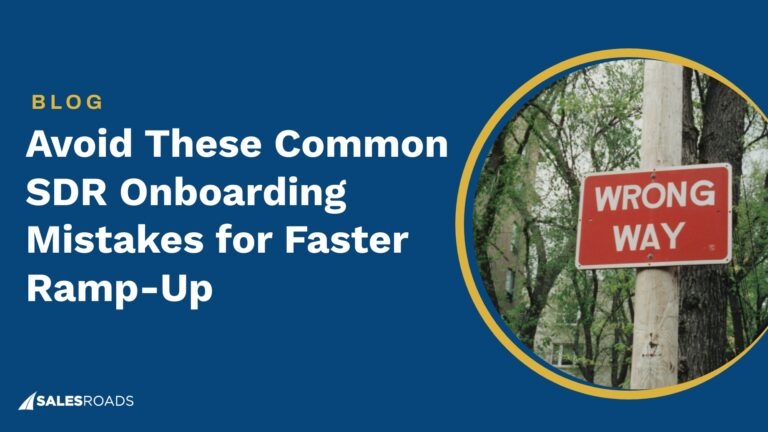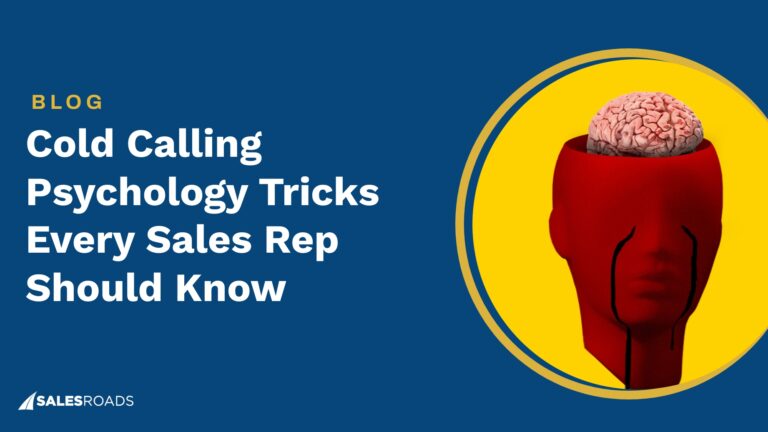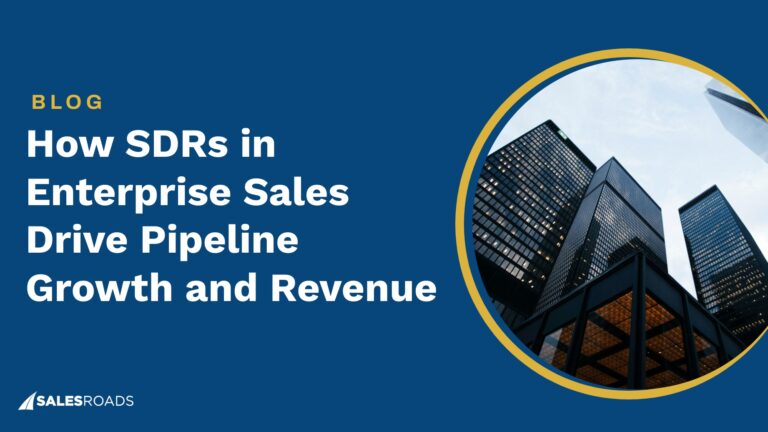The allure of outsourcing lead generation is simple: It offers the possibility of improving the effectiveness and efficiency of your sales process without having to shoulder the burden in-house.
But businesses often hesitate to entrust this vital function to an outside entity.
Common misconceptions include a poor understanding of the concept, high expectations without adequate investment, and a rigid focus on the number of leads rather than their quality.
What Challenges Push Businesses to Outsource Lead Generation?
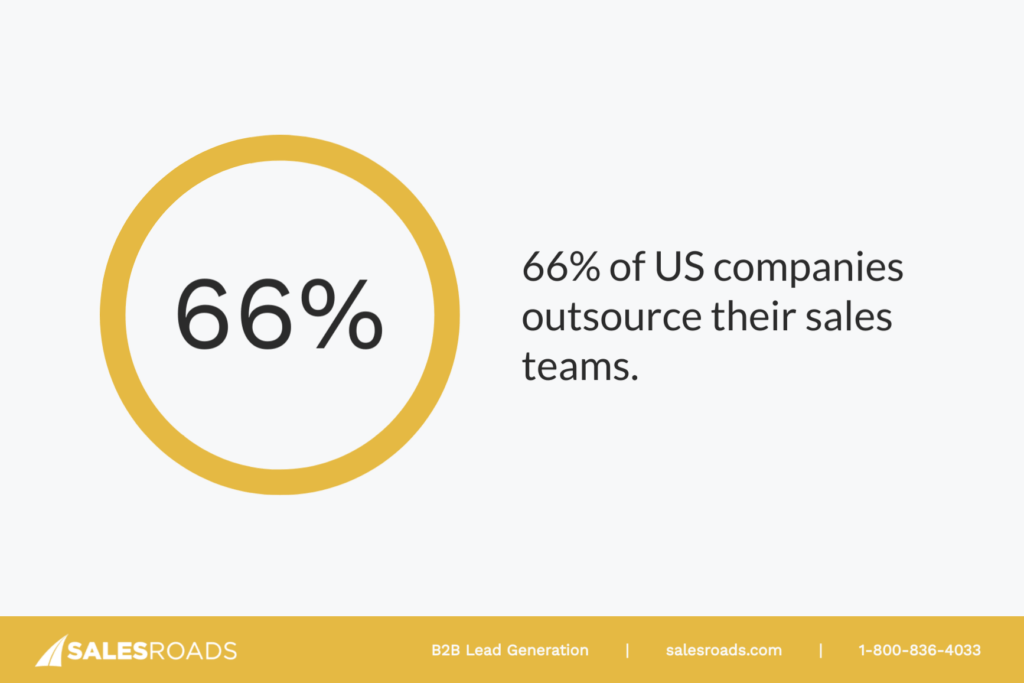
According to Zippia, 66% of U.S. companies prefer outsourcing lead gen. The motivation behind that decision lies in both the challenges inherent in the process and the potential for improvement and growth outsourcing brings.
Let’s dive into these drivers and how businesses navigate them in their pursuit of a successful lead generation strategy.
Overwhelmed Account Executives (AEs)
When AEs become swamped with both prospecting and closing deals, their overall efficiency diminishes.
- Decreased productivity
The natural fallout of an excessive workload is a reduction in the time and attention AEs can devote to individual tasks, leading to a decrease in productivity and the quality of their interactions.
This decline also hinders strategic planning and forward-thinking activities that are integral to business growth.
- High turnover rates
David Kreiger, the founder of SalesRoads, emphasizes this consequence, saying:
“It is not easy for an AE to juggle both prospecting and closing deals. You increase employee burnout as they’re going back and forth into these two different roles, even with AI making them more efficient in some of those interactions.”
The constant pressure to perform multiple roles leads to high stress levels and poor well-being. Coupled with a lack of a healthy work-life balance, those factors contribute to higher turnover rates.
When employees leave, it not only disrupts the smooth functioning of the business but also incurs substantial costs in terms of recruitment, onboarding, and training new hires.
- Lost opportunities
Overworked AEs lack the time to follow up with leads adequately, and the quality of their client engagement suffers too.
This results in lost opportunities, which lowers the sales conversion rate and hurts the company’s bottom line. In the long run, it could also mean a loss of market share to competitors.
- Strategy misalignment
Strategy alignment is crucial, as it ensures every action taken furthers the company’s broader objectives.
AEs tasked with both prospecting and closing might fail to align their activities with the overall sales strategy, leading to uncoordinated efforts, inefficient use of resources, and inconsistency in messaging and customer experiences.
It also hinders the company’s ability to track and measure its progress effectively.
Outsourcing lead generation lightens the load on AEs, allowing them to focus less on prospecting and more on closing deals.
The result is improved productivity, richer customer interactions, a healthier work environment, and, ultimately, a more successful sales pipeline.
Hear Amanda Cyr, Government Director and Team Lead at AchieveIt, discuss how her sales rate has improved working with SalesRoads.
Entering New Markets
From cultural barriers to runway costs, pushing into new markets is a large undertaking that poses many challenges.
David Kreiger, President of SalesRoads, talks with Craig Herman about entering new markets using the ecosystem strategy.
- Niche market dynamics
Every market is unique, with its own economic and social dynamics, laws, and regulations that businesses need to navigate to succeed.
It’s not enough simply to transfer existing strategies between markets, as what works in one region may fail in another.
Understanding these specific workings is a difficult but crucial step in planning a successful expansion, prompting many businesses to turn to outsourcing as a viable solution.
- Expertise gaps
A lack of expertise stunts your pipeline, which then produces unforeseen barriers and escalates costs.
Developing expertise in a new market is an in-depth process that takes time. It requires learning unique consumer behaviors, market trends, and the competitive landscape. Language and cultural barriers can further complicate this and cause miscommunication and misunderstandings.
Unexpected costs such as local taxes, regulatory fines, or higher operational expenses also drastically impact your profitability and ROI.
- Established market players
You have to contend with established players in new markets who make it difficult for you to gain a foothold.
These incumbent companies already enjoy strong brand recognition, well-cultivated distribution networks, and deep knowledge of the market.
As a new entrant, carving out a niche against known names can be daunting and requires strategic planning, considerable resources, and resilient execution.
- Risks of market expansion
Expanding into a new market is a risky endeavor.
The uncertainty of unknown market dynamics, customer preferences, and regulatory frameworks poses a threat to your business’s financial health and reputation. Market expansion also stretches the company’s resources thin, which can weaken its performance in its current markets.
To mitigate these risks, you need thorough market research, strategic planning, and, sometimes, the prudence to outsource certain operations to minimize potential negative impacts.
Outsourcing lets you access expert knowledge and experience necessary to generate leads in your new market from day one.
You tap into an already established sales machine and gain both cost efficiency and precious time saved while slashing potential risks. It also gives your business the flexibility to scale up or down depending on the market response.
Lack of in-house SDR expertise
When a business lacks in-house SDR expertise, building a team is risky.
- Obstacles of in-house SDR team development
Poor capacity to train or maintain an effective in-house SDR team is a formidable hindrance that can potentially undermine your lead generation efforts.
The development and upkeep of an SDR team demands not only an initial investment in recruitment and training, but also ongoing training and coaching, performance evaluation, and course correction.
Without adequate expertise, these tasks become exceedingly difficult, leading to subpar performance and missed lead generation opportunities.
- Limited knowledge and infrastructure
Limited knowledge of effective lead generation strategies and technical infrastructure will hold your business back. With AI becoming a major component of sales, staying up to date is crucial.
Companies missing the in-house expertise to leverage these technologies find themselves at a competitive disadvantage, with less effective outreach, lower conversion rates, and slower sales cycles.
- The implications of high SDR turnover rates
High turnover rates drain your pipeline and lead to inharmonious efforts.
The constant need to recruit and train new members disrupts the continuity of operations and diverts valuable resources away from lead generation. Further, it fuels inconsistency in customer interactions, potentially undermining client relationships and negatively impacting the sales pipeline.
Partnering with the right vendor fills those gaps by offering both training and managerial support to nurture an efficient SDR team.
Your partner comes equipped with the necessary stack and brings expertise to the table to mitigate high turnover and its impact on sales programs.
Budget Constraints
Businesses often underestimate the total cost of building and maintaining an in-house SDR team.
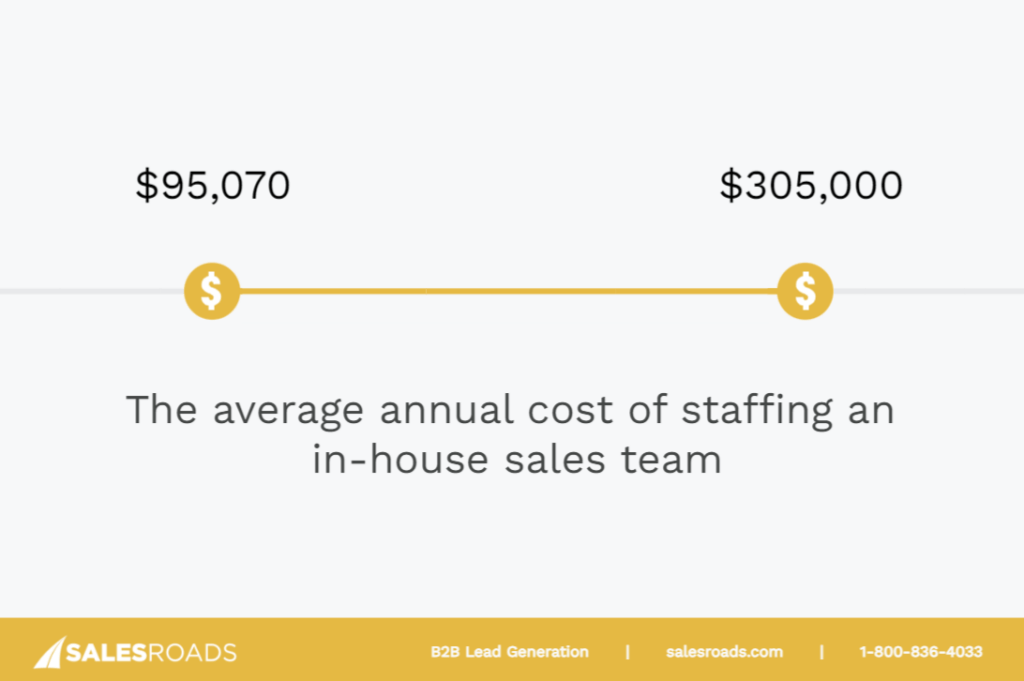
On average, it costs between $95,070 to $305,000 to staff an in-house sales team.
Note that this hefty price tag accounts for salaries and benefits only; there are several other costs that dramatically increase the total expense. You need to factor in the true costs, both visible and hidden.
- High initial setup costs
Initial setup costs are substantial, spanning from infrastructure to recruitment and training.
Establishing a physical or virtual workspace, investing in necessary hardware and software, recruiting the right talent and providing them with comprehensive training — all of these activities demand significant up-front investment.
For businesses operating with budget constraints, these costs pose a formidable hurdle.
- Ongoing operational expenses
In addition to setup costs, the operational expenses of maintaining an in-house team are burdensome. These include not only visible costs like salaries and benefits but also hidden ones like continuous training, performance incentives, and team management expenses.
Such recurring costs strain budgets and divert resources away from other critical business functions.
- The extended payback period of in-house teams
It takes a considerable amount of time before an in-house SDR team starts to deliver results.
Companies have to wait for SDRs to ramp up, familiarize themselves with your product, and build a robust pipeline before they begin to see revenue. This extended payback period leads to cash flow challenges, especially for businesses operating on tight budgets.
- The price of inexperience in lead generation
Companies lacking experience in lead generation are prone to costly mistakes, be it targeting the wrong prospects or mishandling potential clients. Additionally, ineffective prospecting strategies, inadequate follow-ups, and poorly executed sales pitches not only miss opportunities but also tarnish the company’s reputation.
These rookie mistakes have long-term financial implications, further underscoring the value of experienced, outsourced teams.
Outsourcing eliminates these errors (and their accompanying costs), providing immediate access to an experienced team with established methodologies. Your outsourced team yields a faster ROI as they hit the ground running by leveraging their expertise and pre-established processes.
Rapid Expansion
Experiencing rapid growth is both exhilarating and challenging.
It puts you in a unique position where you need to ramp up lead generation quickly while maintaining the same level of quality in each interaction amid increasing market complexity and customer expectations.
- Scaling operations to match greater demand
One of the immediate challenges is higher demand, which necessitates a quick scaling up of operations. Companies need to double their sales efforts, hire more employees, invest in more extensive training, or upgrade their systems and infrastructure.
Scaling at a fast pace requires an agile strategy, effective resource management, and efficient processes without sacrificing the quality of the product or service and retaining first-rate customer satisfaction.
You can stay focused on core expansion areas while an expert SDR team handles lead generation, ensuring your growth doesn’t come at the cost of conversion rates.
- New growth avenues
Rapid expansion demands businesses to allocate resources to developing new product lines, expanding into different locations, or targeting untapped market segments.
Although promising, these initiatives are risky and eat into resources. They require substantial investment in market research, product development, promotional activities, and possibly even infrastructure. Balancing these needs with existing operations is a delicate and challenging task.
How Much Does It Cost to Outsource Lead Generation?
Outsourcing vendors offer different pricing models, including hourly rates, retainer, and pay-for-performance.
The average hourly rate is between $25 and $50, while retainers start at around $8,000.
All have pros and cons, but remember, cheaper doesn’t necessarily mean better; a subpar appointment setting partner can cost you business.
David Kreiger echoes this sentiment, warning:
“You could get the lowest-price provider and they book unqualified appointments. That’s the worst deal that you could ever ask for.”
The Bottom Line
Outsourcing lead generation alleviates the load placed on overburdened AEs, bolsters market expansion, fills gaps in expertise, reduces budget constraints, and aids rapid growth.
By leveraging the services of a well-established appointment setting partner, you can improve productivity, lower turnover rates, and scale your operations effectively.
The key lies in choosing the right partner, as quality and experience are the foundation of successful outsourcing.
FAQs
- Why should you outsource lead generation?
Outsourcing improves the effectiveness and efficiency of your sales process without bearing the burden in-house. It alleviates budget constraints, facilitates market expansion, provides expert lead generation skills, and allows for rapid scaling.
- What can you expect from outsourcing lead generation?
When you outsource lead generation, you enter into a strategic partnership that scales with your demand, provides market insights for expansion, and delivers a consistent supply of quality leads. It offers more predictable and cost-effective solutions, as well as a quicker ROI compared to an in-house team.
- How much revenue can you expect from outsourcing lead generation?
Appointment setting partners can’t guarantee a specific number of appointments. Instead, they’ll give you an estimate calculated according to your business’s unique characteristics. For instance, SalesRoads looks at your value prop, industry, decision-makers, pipeline, and business goals to estimate your ROI. Take advantage of our revenue calculator to determine your pipeline growth potential in a minute.
- What should you look for in an outsourced lead generation partner?
Too many vendors use cookie-cutter approaches and spammy practices. Asking the right questions helps you uncover red flags early and avoid partnering with the wrong provider. Watch our webinar, How to Evaluate Different Appointment Setting Partners, and learn five must-ask questions to guarantee your investment before signing a contract.







